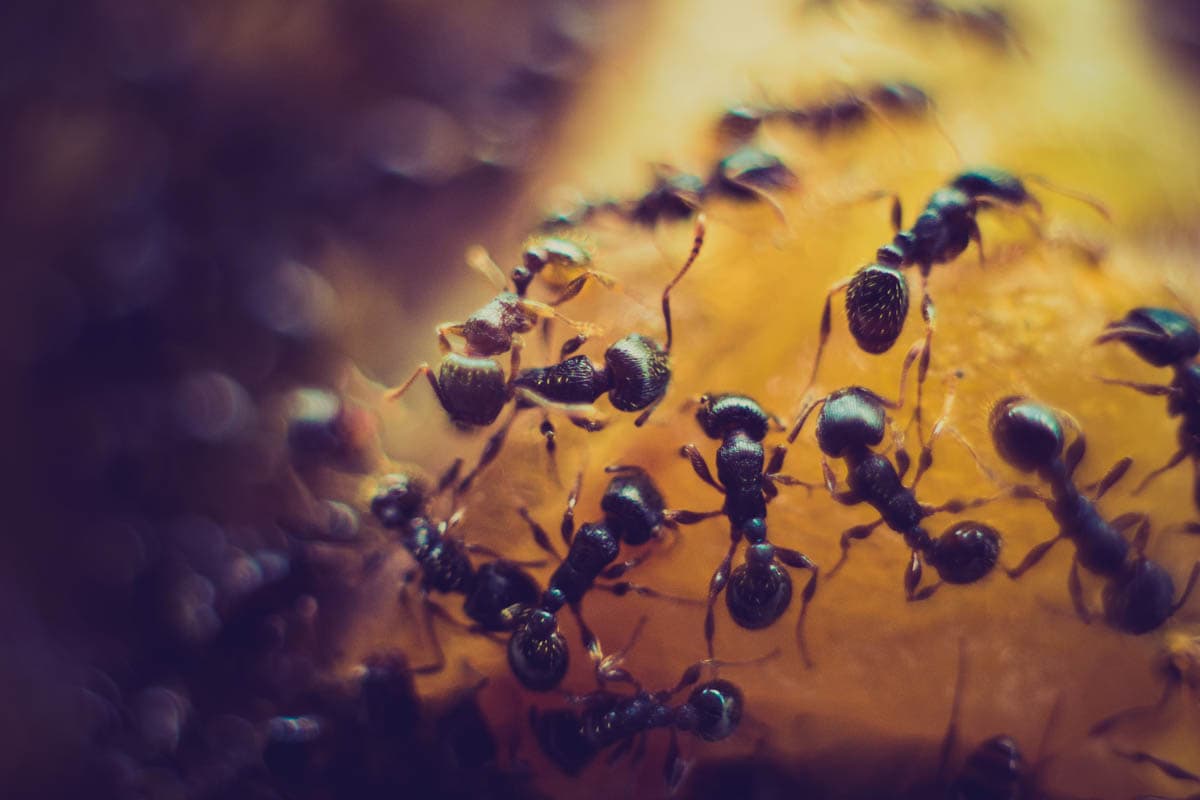Ants are a common and prevalent pest in the home, especially in the warmer months. The cat’s food bowl can be a popular target to ants because, in most houses, pet bowls contain food or traces of food which can sit around for hours.
How to keep ants out of cat food bowls
Store food properly
Keep dry food in its original packaging, and store it inside an airtight container and avoid buying huge bags of food that sits around for months on end. Not only does it encourage ants, but storage mites can take hold too.
Wash food (and water) bowls after every meal
This is even more important if you feed raw or canned food as food particles can stick to the side of the dish and attract ants. Soak bowls in warm soapy water to soften, remove food residue, rinse with water and dry. Wash water bowls at the same time to prevent the build-up of a sticky biofilm on the inside of the bowl.
Purchase an ant-proof food bowl
There are several types of ant-proof bowls on the market. Some have a moat around the outside to add water to; others are elevated from the ground. Elevated bowls are a good choice for senior cats who may have arthritis.
Tip: Avoid plastic bowls which can cause feline acne.
DIY ant-proof bowl (moat method)
Sit the food bowl inside a large kitchen tray or a larger pet food bowl and add water to the outer tray/bowl.
Vaseline
Rub a thin layer of vaseline around the side of the food bowl. I don’t like this idea, it sounds messy and will need to be re-applied every time the food bowl is washed.
Routinely clean floors around pet bowls
Pets can drop food on the floor, which can attract ants. When you pick up the food and water bowl to clean, spray the floor with white vinegar or warm water with a dash of dishwashing detergent and leave for 5 minutes. Wipe clean.
Keep the kitchen clean
I am reasonably clean but noticed ants on the kitchen benches today which were attracted to the sticky residue left behind from some soft drink. Clean up spills immediately and store all food in insect-proof containers to not only keep ants but cockroaches and pantry moths out.
Don’t leave dirty plates lying around, soak in the sink or put straight into the dishwasher and close the door.
Sweep or vacuum once a day to remove food debris.
Ant deterrent
Making a barrier around the cat’s food bowl with ground cinnamon, chalk, coffee grounds, chilli powder, food-grade diatomaceous earth may be of help, but they are also messy. This method could be useful for cats who eat outside, or stray cats but the moat method is more effective and less messy.
Ant deterrents
The Internet is awash with home remedies for ants, but most are ineffective, and some can be potentially dangerous. Various recipes with essential oils are recommended, but many are toxic to cats and must be used with caution. Remember, anything a cat comes into contact with can be ingested when the cat grooms.
Block off any entry points by sealing cracks and crevices around your property.
White vinegar may be of limited help in deterring ants due to the strong smell; however, it must be re-applied frequently.
I don’t recommend the use of insect spray around cats, especially on or around areas they eat. If you have a serious ant problem, contact a licensed pest controller who can help. Let them know in advance you have pets in the home so that they can use a pet-safe treatment.
Should I be concerned if my cat ate some ants?
The ants themselves won’t harm the cat, but they may have been in contact with a pesticide that could potentially be toxic. The risks would be minimal unless the cat consumed large numbers of ants.

